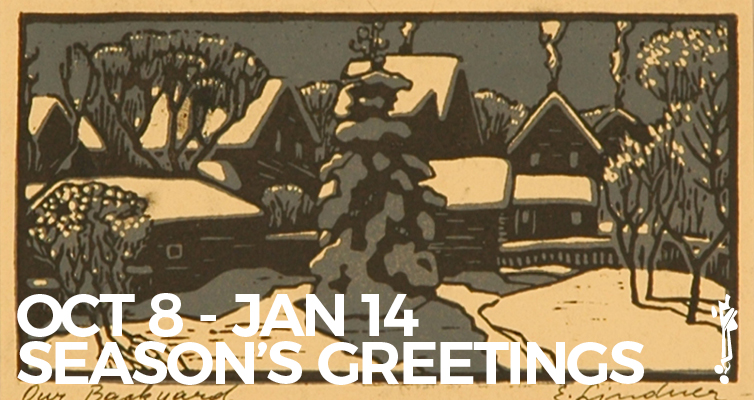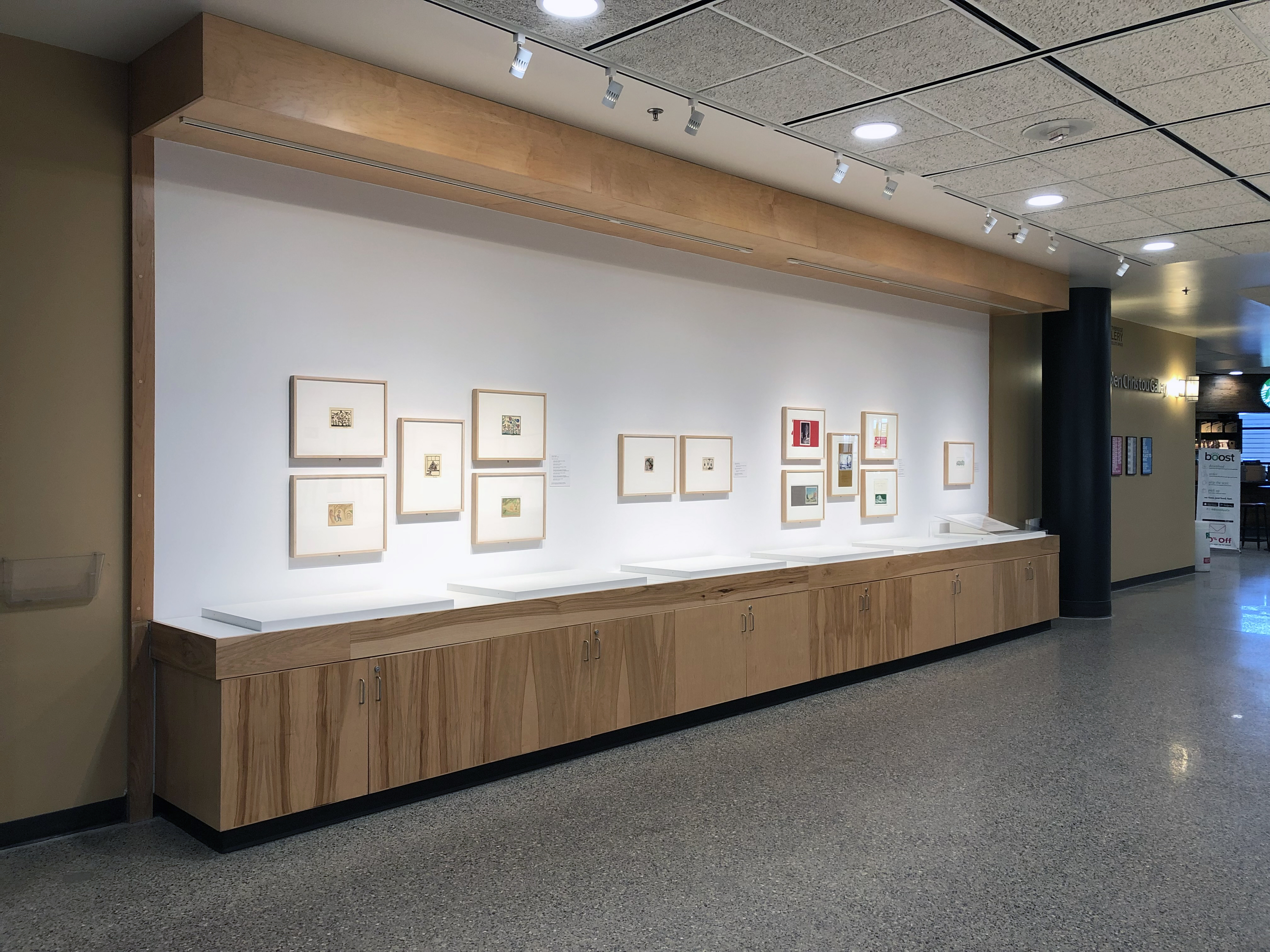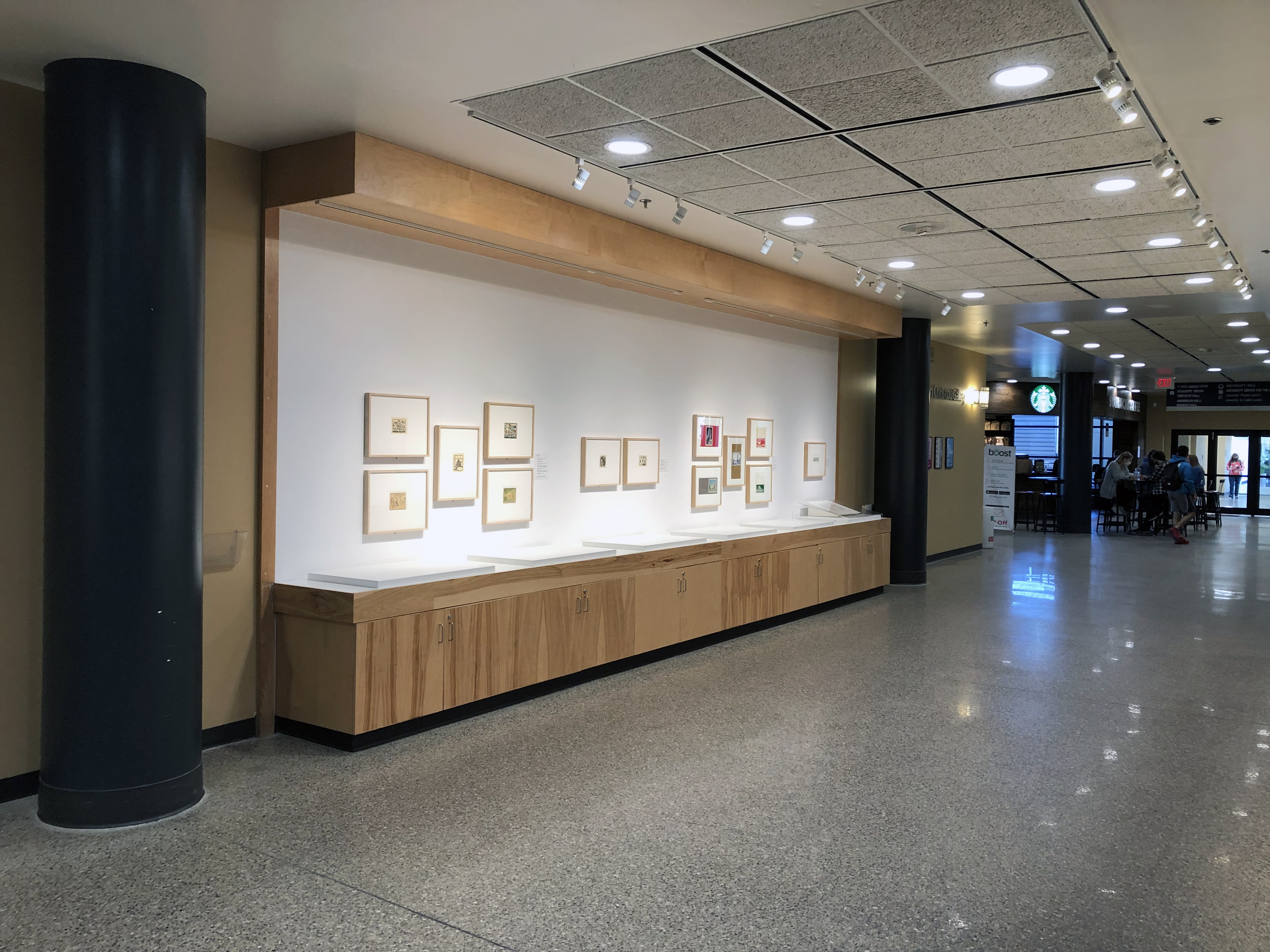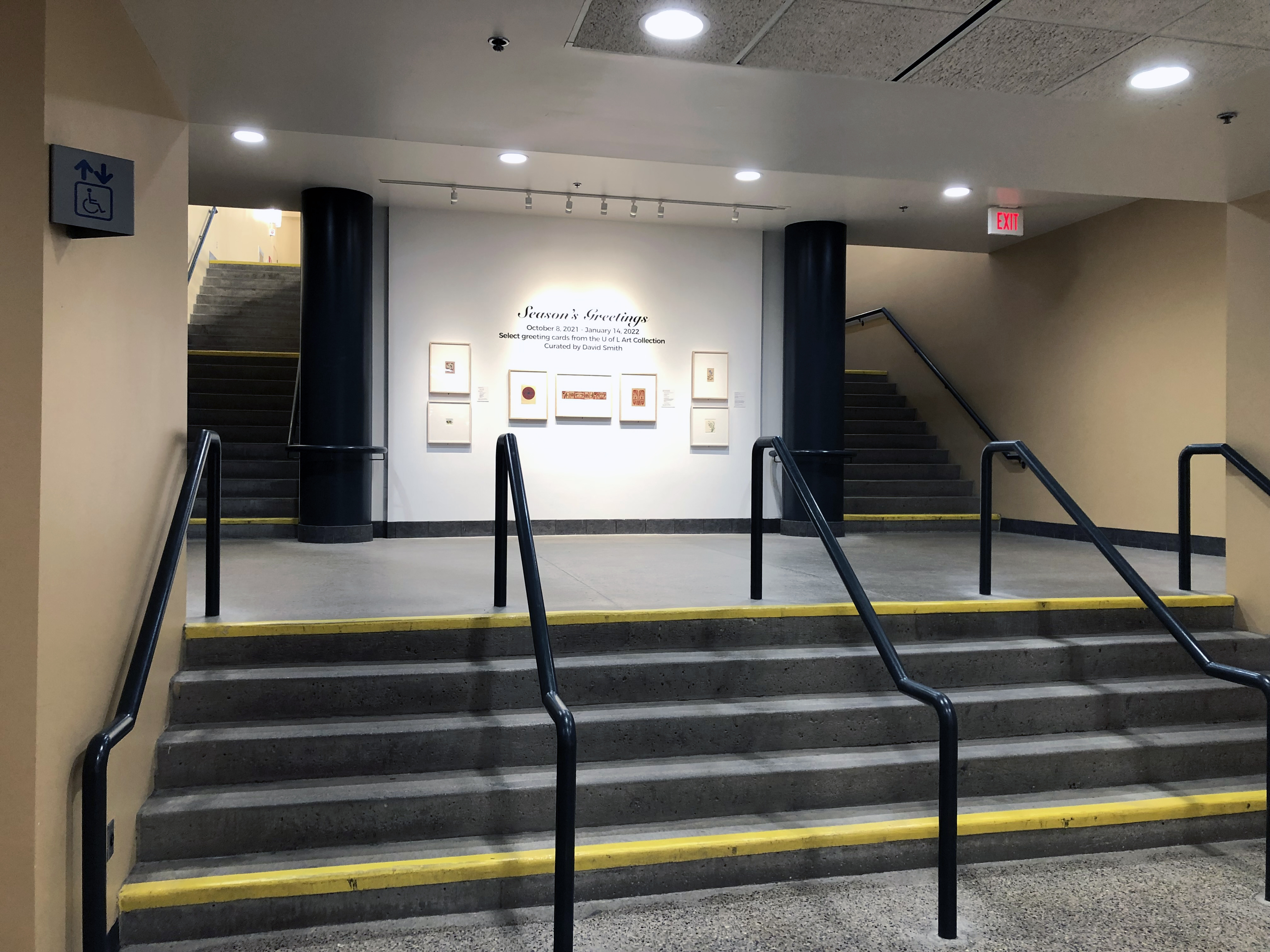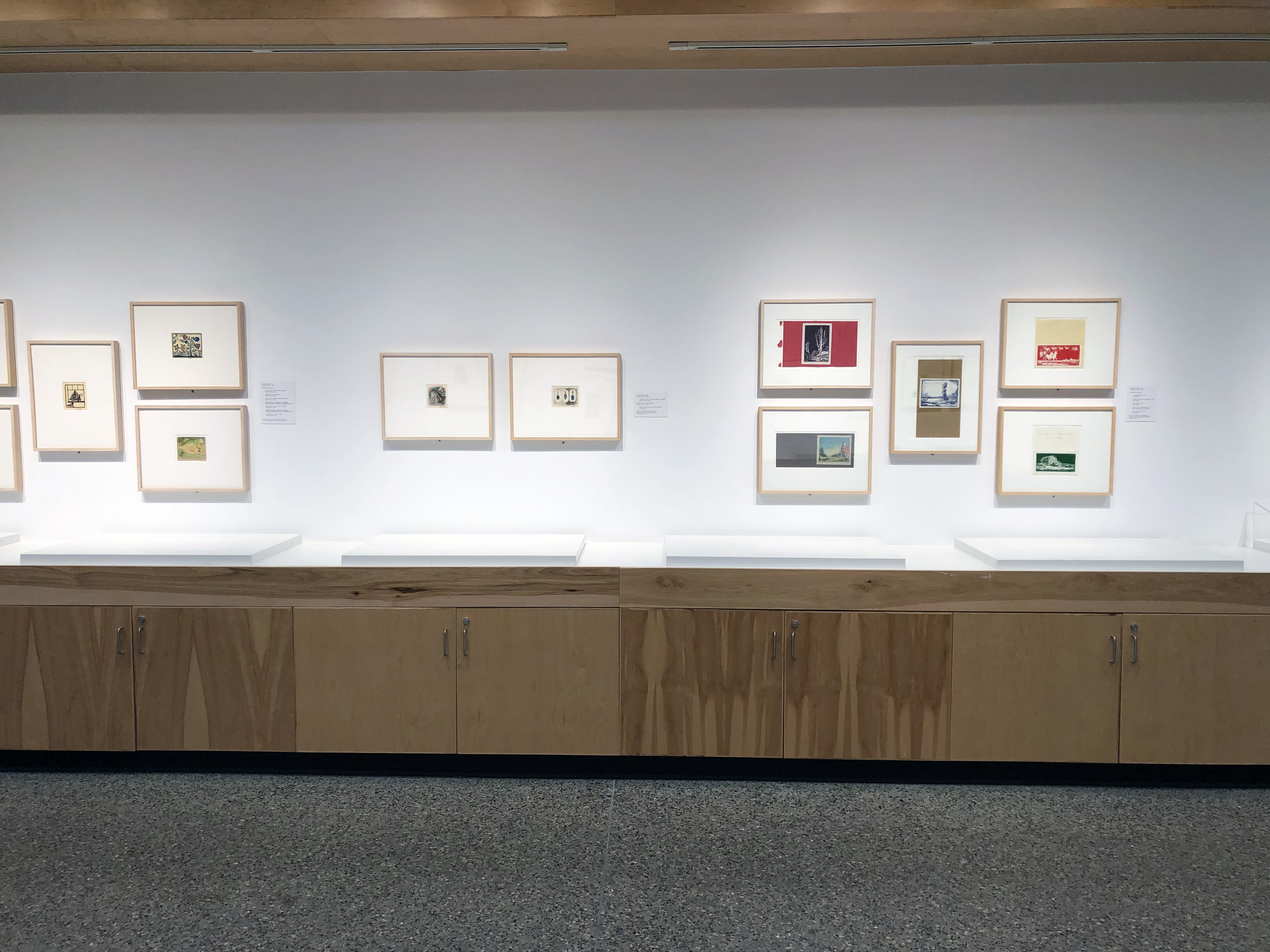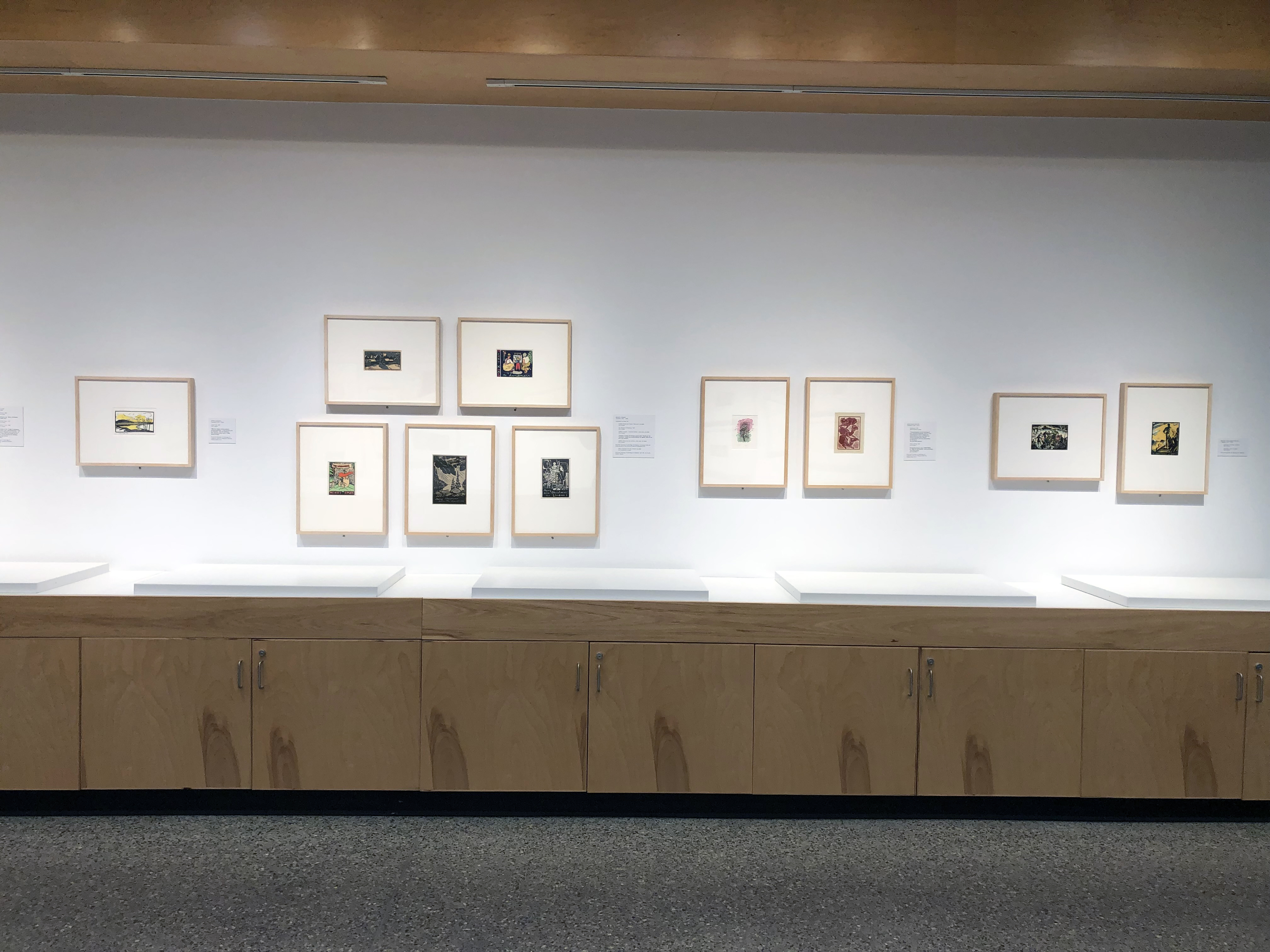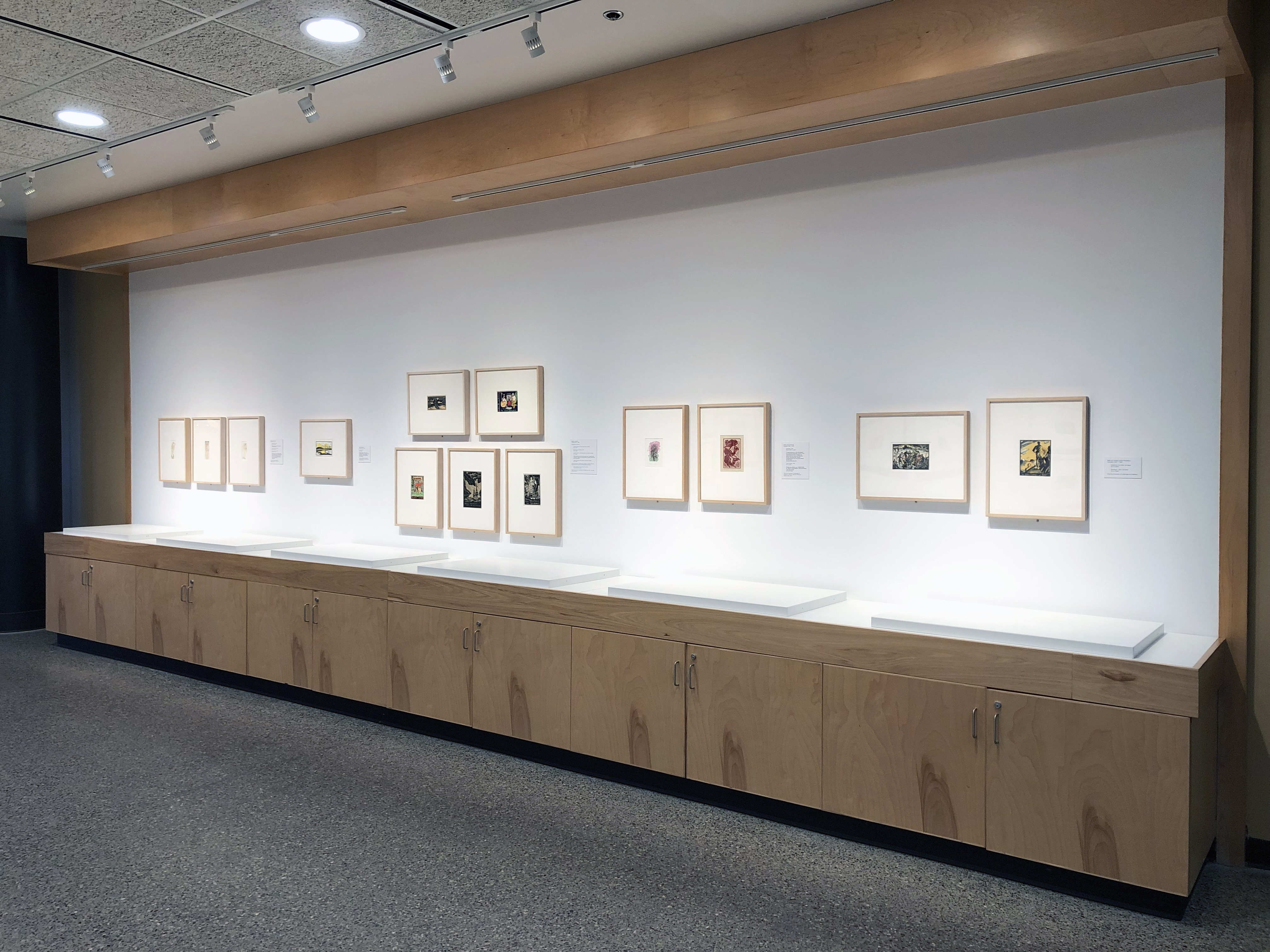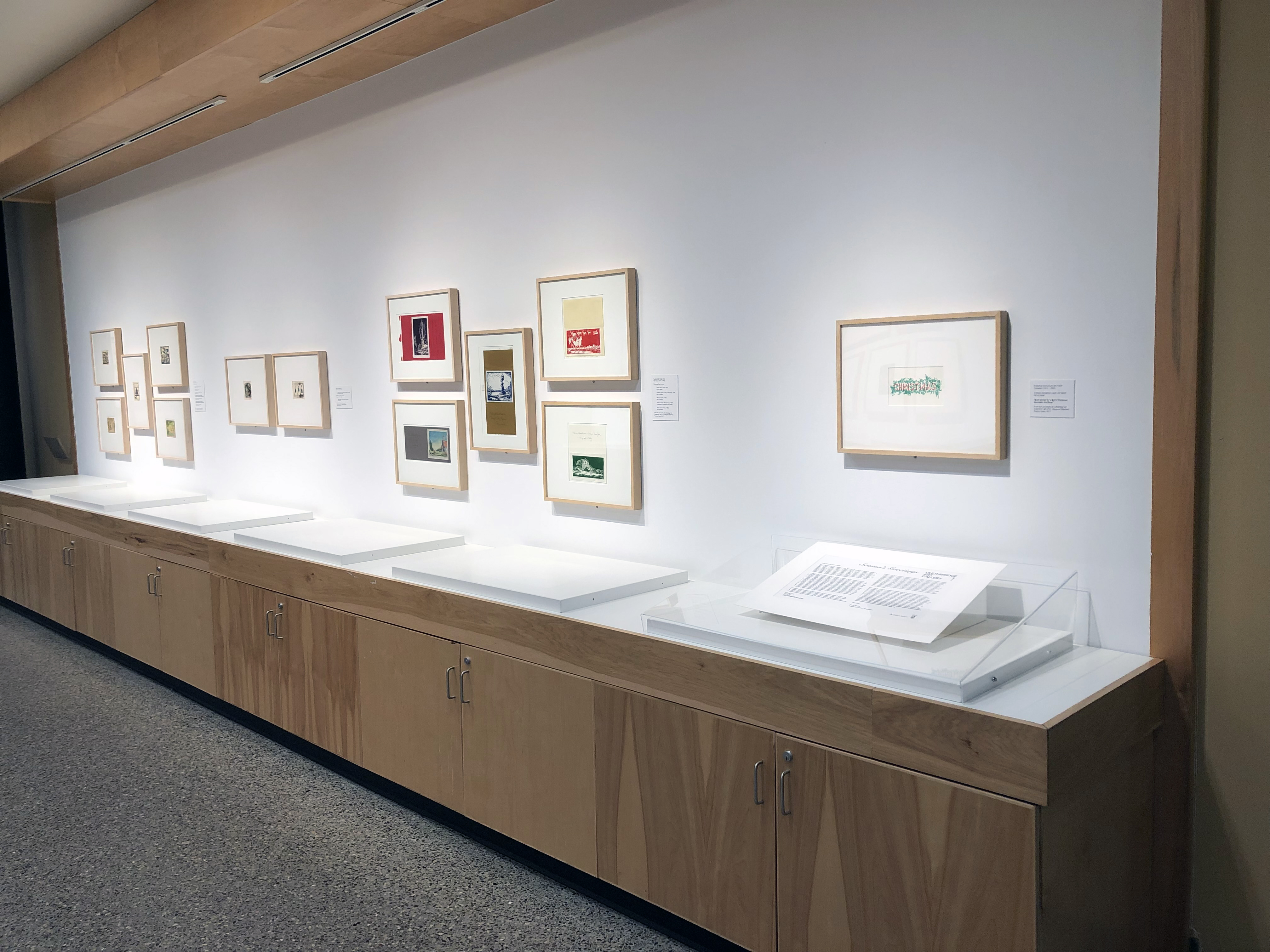Helen Christou Gallery
October 8, 2021 – January 14, 2022
Season’s Greetings
Selected greeting cards from the U of L Art collection, this exhibition highlights the work of western Canadian artists in the 20th Century and features works by H.G. Glyde, Ernst Lindner, and Dora Helen Mackie.
Curated by David Smith.
Curatorial Letter:
Dear Campus Community,
It’s no secret that I love getting mail. Seeing a fragment of paper through the window of my mailbox makes my heart skip a beat. I love sending mail too. Whenever I go on a trip I send postcards to my loved ones and I enjoy writing handwritten letters when I have news to share. There’s something so special about this form of communication that requires more intention, planning, and time than sending a text message or an email. However, it is perhaps these same features that are it’s downfall. Physical mail continues to decline as people accept and embrace technological change.
At first glance, all of these cards (even those created by the same artist) seem quite different from one other. What they do share in common is the fact that they were each created by hand and sent through the mail. Not only are the cards individually unique, but some of the artworks are consistent with the style of work that the artists are best known for (Robert Davidson’s Northwest Coast serigraphs and William Panko’s folk scenes for example) and others such as those by H.G. Glyde and Ernest Linder contain playful and festive subject matter that are remarkable deviations from the typical landscapes that we’ve come to expect from these artists. Many of the artists who used printmaking for their cards created uneditioned or open editioned prints, meaning that there isn’t a fixed or known total for the number of prints produced. The works executed in watercolour or mixed media by Peter Karsten, Freda Waddell and John (Jack) Martin are particularly charming given that they are truly one-of-a-kind and must have been a pleasure to receive.
Art cards are a challenge to display because, as is most often the case, the artwork is on the front of the card and the message is inside. In a standard frame it’s not possible to show both sides and usually the artwork gets separated from the rest of the card. The five cards made and sent by Margaret Shelton are an interesting exception and it’s a rare chance to see these prints in the context they were originally presented. Artist cards resist the standard categorizations of either art or archival material. Most of the artworks in this exhibition were donated by the estate of Margaret (Marmie) Hess in 2017. Some of the cards with original artwork in her collection ultimately ended up in the archives at the University of Calgary. In the process of selecting and preparing these works, I have enjoyed discovering the personal connections that they document. The congratulations, birthday wishes and season’s greetings contained inside reveal rich personal relationships that don’t usually get acknowledged when artworks like this get exhibited. I hope you enjoy discovering some of the messages I have included here which are transcribed on the label copy.
While we have all had different challenges in the past year and a half, I recognize that I am not alone in having spent periods of time experiencing loneliness. There seems to be a growing awareness around the impacts of social isolation on mental and physical health which is both encouraging and important. One of the ways we can alleviate feelings of loneliness is to reach out to people in our existing social networks. I was very pleased that in September of 2020, Canada Post created the “Write here. Write now.” campaign which saw the distribution of free prepaid postcards to every residence in Canada in recognition of the importance of meaningful connection to our emotional health, sense of community and overall wellbeing (as stated by CEO Doug Ettinger.) It is this characteristic of the cards included in this exhibition that resonates with me today; these pieces are at once both artworks and physical manifestations of human connection through art.
Sincerely,
David Smith
Assistant Curator / Preparator
